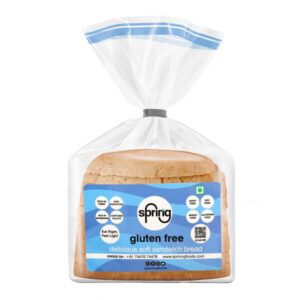
Fodmap Diet- A Complete Guide
Welcome to our blog about the low FODMAP diet! If you’re looking to learn everything there is to know about this dietary plan, you’ve come to the right place. In this blog, we will dive into the details of the FODMAP diet and answer all of your questions, including:
-
- What are FODMAPs and how do they affect the body?
-
- How does the FODMAP diet work to reduce digestive symptoms?
-
- Who should consider following a low FODMAP diet?
-
- What foods can you eat on the FODMAP diet and what should you avoid?
-
- What are the potential benefits of following a low FODMAP diet?
-
- How can you create a FODMAP diet plan that works for you?
The FODMAP diet can be a helpful tool for managing digestive issues such as irritable bowel syndrome (IBS), but it can also be confusing and overwhelming to navigate. That’s why we’re here to provide you with all of the information and resources you need to understand the purpose of the FODMAP diet and how it can benefit you. Let’s get started!
Are you looking for an easy way to manage your digestive health? Do you want to enjoy meals without feeling like you are depriving yourself? The Fodmap diet may be the answer. The FODMAP diet is a nutritional approach that focuses on limiting certain types of carbohydrates that trigger symptoms associated with Irritable Bowel Syndrome (IBS). This type of diet has been gaining popularity in recent years and it is considered one of the most effective ways to reduce symptoms related to IBS. In this guide, you will learn what the Fodmap diet is, how it works, and which foods are included in the plan. We will also discuss some potential benefits and risks associated with this type of diet so that you can make an informed decision before starting.
What is the Fodmap Diet?
The Fodmap diet is a diet that eliminates certain carbohydrates from the diet in order to reduce symptoms of irritable bowel syndrome (IBS). The acronym “FODMAP” stands for Fermentable Oligosaccharides, Disaccharides, Monosaccharides, And Polyols. These are all types of carbohydrates that are poorly absorbed by the body and can cause symptoms of IBS.
The Fodmap diet has been shown to be effective in reducing symptoms of IBS in many people. However, it is a restrictive diet and should only be followed with the guidance of a Registered Dietitian or other healthcare professional.
How FODMAP Diet Work
The FODMAP diet is a food elimination diet that was created to help manage symptoms of irritable bowel syndrome (IBS). The diet eliminates certain types of carbohydrates that are known to contribute to digestive issues, including bloating, gas, and abdominal pain.
The FODMAP diet is not a long-term solution for IBS, but it can be used as a tool to help identify which foods are triggering your symptoms. Once you know which foods are causing problems, you can work with your doctor or a registered dietitian to create a more sustainable eating plan that still includes all the nutrients your body needs.
Who should do Fodmap Diet
If you have been diagnosed with IBS or have persistent digestive issues, the FODMAP diet may be a good option for you. This diet has been shown to help reduce symptoms in people with IBS, and can also be beneficial for those with other digestive disorders such as Crohn’s disease, ulcerative colitis, and SIBO.
The FODMAP diet is not appropriate for everyone, and it is important to speak with your doctor or a registered dietitian before starting this or any other new diet. That being said, the FODMAP diet can be a helpful tool for managing digestive symptoms in many people.
Foods to eat on FODMAP Diet
There are a few things to keep in mind when following a FODMAP diet. First, you’ll want to focus on eating high-quality, nutrient-rich foods. This means plenty of fresh fruits and vegetables, lean protein sources, whole grains, and healthy fats. You’ll also want to limit your intake of processed foods, sugary drinks, and alcohol.
In general, you’ll want to stick to low-FODMAP foods like those listed below. However, everyone is different and you may find that some of these foods don’t agree with you. Be sure to listen to your body and make adjustments as needed.
- Fresh fruits: bananas, blueberries, grapes, oranges, strawberries
- Fresh vegetables: carrots, celery, green beans, lettuce, tomatoes
- Lean protein sources: chicken breast, eggs, fish ( salmon , tuna), turkey breast
- Whole grains: oats , quinoa , brown rice
- Healthy fats: avocados , olive oil , nut butters
Foods to Avoid During FODMAP Diet
There are certain foods that should be avoided when following a FODMAP diet, as they can trigger symptoms. These include:
- Foods high in fructose, such as honey, agave nectar, and fruit juices.
- Foods high in lactose, such as milk, ice cream, and yogurt.
- Foods high in fructans, such as wheat, rye, and garlic.
- Foods high in galactans, such as legumes and beans.
- Certain artificial sweeteners, such as sorbitol and mannitol.
Fodmap Diet Benefits
The Fodmap diet is a great way to improve your digestive health and overall well-being. Here are some of the top benefits of following a Fodmap diet:
- Relief from digestive issues: The Fodmap diet can help to alleviate symptoms of irritable bowel syndrome (IBS), Crohn’s disease, and other gut disorders.
- Improved absorption of nutrients: By reducing inflammation in the gut, the Fodmap diet allows for better absorption of nutrients from food.
- More energy: Following a Fodmap diet can lead to increased energy levels due to improved digestion and nutrient absorption.
- Reduced inflammation: The anti-inflammatory properties of the Fodmap diet can help to reduce overall inflammation in the body.
- Weight loss: The Fodmap diet can be helpful for those looking to lose weight, as it helps to regulate appetite and promotes feelings of fullness.
Fodmap Diet Plan
The Fodmap diet is a high fiber, low carbohydrate diet that has been shown to be effective in reducing symptoms of irritable bowel syndrome (IBS). The diet is based on the premise that certain carbohydrates called Fodmaps are poorly absorbed in the small intestine and can ferment in the large intestine, leading to gas, bloating and pain.
The Fodmap diet involves eliminating all foods that contain Fodmaps from your diet for a period of time (usually 6-8 weeks), and then slowly reintroducing them one at a time to see which ones you can tolerate.
There are many different ways to do the Fodmap diet, but the most common approach is to start with a low Fodmap diet and then gradually add back in high Fodmap foods until you find your personal threshold for tolerating them.
Most people find that they can tolerate small amounts of some high Fodmap foods, but everyone is different. The key is to experiment and find what works for you.
If you’re considering doing the Fodmap diet, it’s important to talk to your doctor or a registered dietitian first to make sure it’s right for you.
Purpose of FODMAP Diet
The FODMAP diet is a tool that can be used to help manage the symptoms of irritable bowel syndrome (IBS). The diet is based on the premise that certain carbohydrates are not fully absorbed in the small intestine and can ferment in the large intestine, leading to symptoms such as abdominal pain, bloating, gas, and diarrhea.
The FODMAP diet consists of eliminating foods that are high in fermentable oligosaccharides, disaccharides, monosaccharides, and polyols. These include dairy products, wheat, legumes, some fruits and vegetables, and artificial sweeteners. The goal of the diet is to reduce symptoms by reducing the amount of fermentable carbohydrates in the diet.
There is evidence to support the use of the FODMAP diet in managing IBS symptoms. A systematic review of randomized controlled trials found that the FODMAP diet was more effective than a placebo or no treatment in reducing IBS symptoms. The diet has also been shown to be more effective than a standard IBS diet in reducing symptom severity.
If you are considering trying the FODMAP diet, it is important to work with a registered dietitian who can help you individualize the diet and ensure that you are getting all the nutrients you need.







